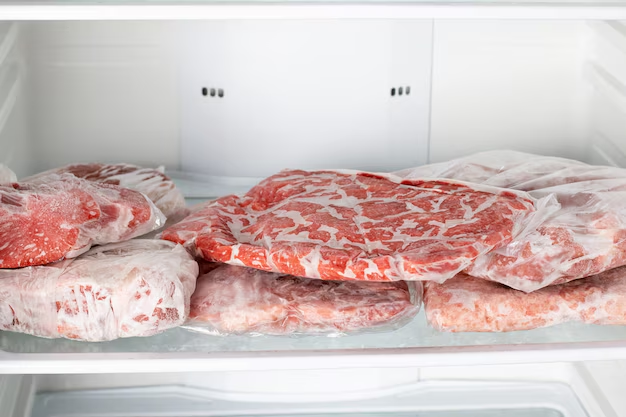How Long Is Thawed Chicken Safe in the Refrigerator? A Comprehensive Guide
Ever rummaged through your fridge, wondering if the thawed chicken you pulled out a couple of days ago is still good to use? With a little know-how, you can confidently manage food safety and prevent waste. This article dives into the key factors influencing how long thawed chicken is safe to consume and offers practical tips to ensure you're storing your food optimally.
Understanding Food Safety Basics for Thawed Chicken
Why Proper Storage Matters
Storing chicken properly is critical to avoiding foodborne illnesses. Chicken, if not handled correctly, can harbor bacteria like Salmonella and Campylobacter, which are common causes of food poisoning. Ensuring your chicken is stored at safe temperatures can prevent this.
Defining Thawing and Its Methods
Thawing is the process of bringing frozen food back to its pre-frozen state. There are several methods for thawing chicken, each with varying impacts on its shelf life:
- Refrigerator Thawing: The safest method, allowing chicken to defrost slowly at a safe temperature.
- Cold Water Thawing: Faster than refrigerator thawing, but requires immediate cooking afterward.
- Microwave Thawing: The quickest method; similar to cold water thawing, it requires immediate cooking.
Thawed Chicken in the Refrigerator: How Long Does It Last?
The General Rule of Thumb
Generally, thawed chicken that has been defrosted in the refrigerator is safe to consume within one to two days. This period allows the chicken to stay at a safe temperature below 40°F, minimizing the risk of bacterial growth.
Factors That Affect Shelf Life
Several elements influence how long thawed chicken stays safe in your fridge:
- Initial Freshness: The fresher the chicken before freezing, the longer it will last once thawed.
- Refrigerator Temperature: Consistently maintaining your fridge at 37°F to 40°F is crucial.
- Packaging: Tight, moisture-sealed packaging helps prevent exposure to bacteria and dehydration.
Identifying Spoiled Chicken
It's vital to know the signs of spoilage, even if you’ve followed all storage guidelines. Look for:
- Off Odors: A strong, sour, or unpleasant smell is a clear sign of spoilage.
- Color Changes: While some color change is normal when meat oxidizes, a grayish hue or any green spots indicate bacteria growth.
- Texture: Slimy or sticky texture means the chicken is no longer safe to use.
Practical Tips for Safe Chicken Storage
Storing Chicken Properly
- Use Airtight Containers: Store thawed chicken in airtight containers or well-sealed zip-lock bags to minimize exposure to air and potential contaminants.
- Designate a Fridge Area: Keep chicken on the lowest shelf to prevent drips from contaminating other foods.
- Label and Date: Always label and date chicken packages to track how long they’ve been in the refrigerator.
When to Cook Thawed Chicken
Cooking chicken soon after thawing maximizes safety and quality. If you're near the two-day mark and uncertain, it's best to cook it or refreeze if it was thawed in the refrigerator.
Additional Insights into Chicken Safety
Refreezing Thawed Chicken
Can you refreeze thawed chicken? The answer is yes, but only if it was defrosted in the fridge and shows no sign of spoilage. Refreezing may affect texture, but it is safe for short-term storage.
Extended Life Through Meal Prep
If you're practicing meal prep, consider:
- Batch Cooking: Cook larger batches of chicken and portion it out for meals during the week.
- Freezing Cooked Portions: This offers a longer shelf life and is convenient for quick meals.
Avoiding Cross-Contamination
- Separate Raw and Cooked: Always use clean surfaces and utensils for cooked foods to prevent contamination from raw chicken juices.
- Regular Cleaning: Keep your fridge clean, and sanitize surfaces to reduce the risk of bacterial spread.
Expert Recommendations for Optimal Shelf Life
Professionals in food safety suggest using a refrigerator thermometer to ensure constant safe temperatures. Additionally, incorporating meal planning tools or reminders can help keep track of food freshness efficiently.
Visual Quick Guide: Thawed Chicken Safety 🗓️
Here’s a handy reference to keep in mind:
- ❄️ Thaw Method: Refrigerator
- Safe Duration: 1-2 Days in Fridge
- 🚫 Avoid: Counter Thawing, Spoilage Signs
- 🔍 Check For: Off smells, color, texture
- 🌡️ Fridge Temp: 37-40°F
- 📆 Tips: Label with Date; Separate Storage
Wrapping Things Up
Ultimately, understanding the basic principles of food safety significantly reduces the risk of foodborne illnesses while stretching your grocery budget by minimizing waste. Balancing safety with planning—be it through effective thawing methods, proper storage practices, or meal prepping—enables you to make the most of your chicken without the stress. Remember, fresh knowledge leads to fresh meals!
